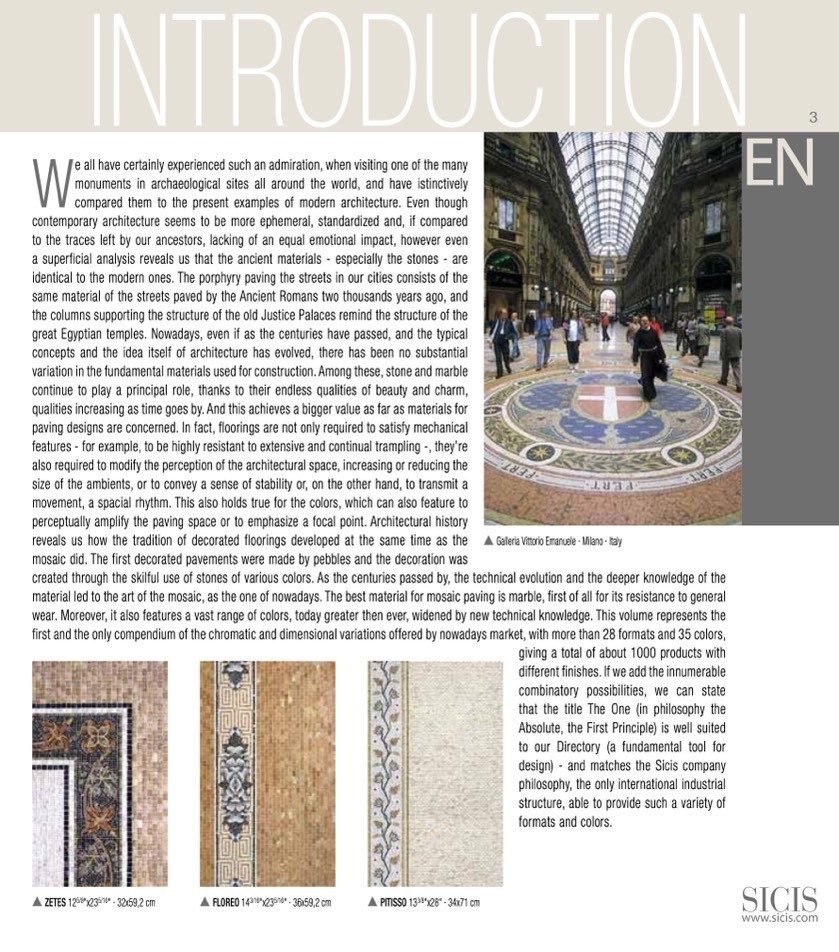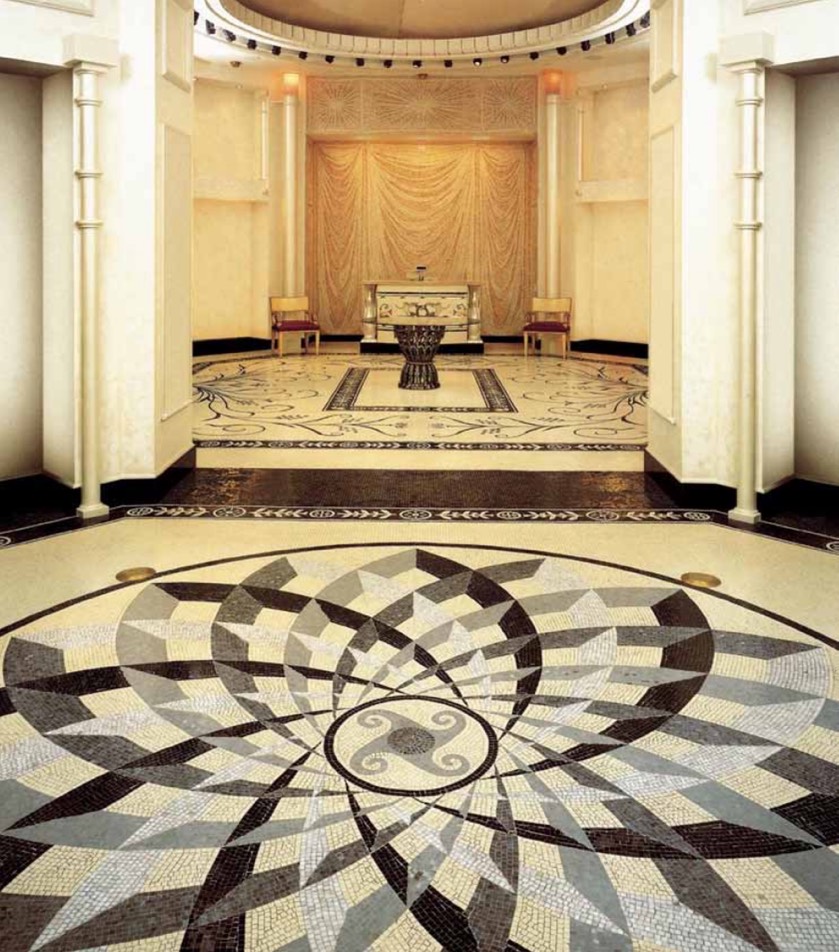
W
INTRODUCTION
e all have certainly experienced such an admiration, when visiting one of the many
monuments in archaeological sites all around the world, and have istinctively
compared them to the present examples of modern architecture. Even though
contemporary architecture seems to be more ephemeral, standardized and, if compared
to the traces left by our ancestors, lacking of an equal emotional impact, however even
a superficial analysis reveals us that the ancient materials - especially the stones - are
identical to the modern ones. The porphyry paving the streets in our cities consists of the
same material of the streets paved by the Ancient Romans two thousands years ago, and
the columns supporting the structure of the old Justice Palaces remind the structure of the
great Egyptian temples. Nowadays, even if as the centuries have passed, and the typical
concepts and the idea itself of architecture has evolved, there has been no substantial
variation in the fundamental materials used for construction. Among these, stone and marble
continue to play a principal role, thanks to their endless qualities of beauty and charm,
qualities increasing as time goes by. And this achieves a bigger value as far as materials for
paving designs are concerned. In fact, floorings are not only required to satisfy mechanical
features - for example, to be highly resistant to extensive and continual trampling -, they’re
also required to modify the perception of the architectural space, increasing or reducing the
size of the ambients, or to convey a sense of stability or, on the other hand, to transmit a
movement, a spacial rhythm. This also holds true for the colors, which can also feature to
perceptually amplify the paving space or to emphasize a focal point. Architectural history
reveals us how the tradition of decorated floorings developed at the same time as the
Galleria Vittorio Emanuele · Milano · Italy
mosaic did. The first decorated pavements were made by pebbles and the decoration was
created through the skilful use of stones of various colors. As the centuries passed by, the technical evolution and the deeper knowledge of the
material led to the art of the mosaic, as the one of nowadays. The best material for mosaic paving is marble, first of all for its resistance to general
wear. Moreover, it also features a vast range of colors, today greater then ever, widened by new technical knowledge. This volume represents the
first and the only compendium of the chromatic and dimensional variations offered by nowadays market, with more than 28 formats and 35 colors,
giving a total of about 1000 products with
different finishes. lf we add the innumerable
combinatory possibilities, we can state
that the title The One (in philosophy the
Absolute, the First Principle) is well suited
to our Directory (a fundamental tool for
design) - and matches the Sicis company
philosophy, the only international industrial
structure, able to provide such a variety of
formats and colors.
3
EN
ZETES 12
5/8
"x23
5/16
" · 32x59,2 cm
FLOREO 14
3/16
"x23
5/16
" · 36x59,2 cm
PITISSO 13
3/8
"x28" · 34x71 cm








